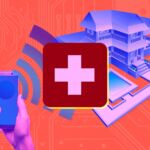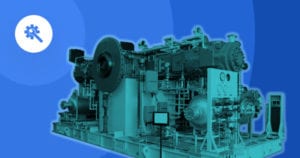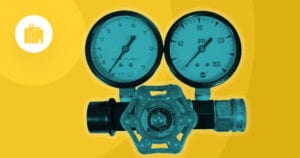
In 2020, schools around the world closed or halted in-person instruction to mitigate the spread of the novel coronavirus. Starting earlier last year, students and teachers looked to IoT to facilitate the shift to structured remote learning. However, the pandemic unearthed many challenges of inequality in education. While video conferencing platforms like Zoom became day-to-day tools for many students, others (particularly low-income students) struggled with basic needs like a working laptop and reliable WiFi. But by integrating all of our modern-day devices with internet connectivity, we can leverage the affordability and accessibility of IoT technology to better prepare students (and teachers) for a more equitable future through more successful remote learning.
Recognizing the Digital Divide
In the early days of the pandemic, the principal guidelines were to lock down all families in their homes, in each country with different restrictions according to the level of severity. Each of these places, teachers, and institutions had to evaluate different ways to achieve quality remote education, but this is still a major problem for countries that do not have the resources to implement it. Unfortunately, many of these students fell behind in their studies. Long-term consequences from this shift are expected: NWEA estimates found that as a consequence of the switch to remote learning, US students in grades 3-8 are anticipated to make only an estimated 70% of the reading gains and 50% of math gains compared with what they would typically learn in a school year.
The ‘digital divide’ between households with lower incomes vs. those with higher incomes is not anything new. But the urgency of the shift to remote learning due to the 2020 crisis has especially highlighted this gap. By developing IoT products and devices that are easy to use, intuitive, and (most importantly) accessible, tech innovation can be used as a tool to help to tackle this divide. The goal? Introduce smart technology to the market that is designed to minimize the friction and barrier to learning in a remote, virtual setting.
IoT in Consideration of Global Education
When we talk about technology in the educational field, we mostly associate it with innovative schools equipped with tools that enable the creation of exercises and activities suited to the student’s learning curve, allowing them to improve their understanding of the most challenging topics. We also have observed that not all countries are lucky enough to have access to these technological tools. The emergence of COVID-19 accelerated the need to implement these solutions.
Education is a privilege that everyone should have access to, regardless of their geographic location or economic level, to access technological tools such as computers, tablets, cellphones, internet access, etc. That is why we must encourage the implementation of affordable online educational programs that apply next-generation technologies such as IoT to address real-world challenges, allowing students to imagine and create new solutions to the big problems we face as humanity. A great example of this is the work being done through OPEN – One Planet Education Network. This organization is one that brings together the greatest minds in education stewardship to facilitate learning for all.
Using IoT to Empower Student Creativity
According to ISTE data, two-thirds of today’s children will eventually work with technologies in fields that haven’t yet been invented. IoTs support the future of these students through a more creative learning process, helping them to think out-of-the-box about the real problems we are facing as a society. Supporting them to build and connect devices and other technology empowers them with the opportunity for hands-on learning. This is where future inventors, scientists, and engineers can explore, learn and begin to build the foundational thinking and problem-solving skills that will be needed to master the technology of tomorrow.
Affordable, Online Education Programs
The pandemic has taught us that successful remote learning for students requires more than daily virtual classroom meetings. It requires a supportive network of peers, ongoing collaboration with school staff and teachers, and unique ways to ensure that students remain engaged even though they may be in a virtual setting. By supplying affordable IoT technology in schools (such as affordable SMARTboard modules or other LPWAN technology like LoRaWAN) teachers can teach from a central school location – but be able to engage their remote students more effectively. IoT allows us to achieve a better-connected, less restricted, and more collaborative environment for students. These devices provide students with more direct lines of communication with their peers and course material. It also gives teachers the ability to measure student learning progress in real-time.
It’s through these applications that we begin to recognize the compelling opportunity that online education programs, done right, provide to the world at large. If created thoughtfully, and with the right technology in place, these types of lessons can empower students to learn even better than before. There is so much opportunity for these types of programs to provide long-term value for students worldwide. Especially for those that may never be able to step foot into a traditional classroom.
This type of technology empowers learners of all ages to grasp the knowledge, skills, values, and attitudes to address the interconnected global challenges we are facing. Schools and tech brands alike should consider partnering together as an investment in our society’s future. By building the confidence, attitudes, and skill set of students today – we arm society with better tools to tackle behemoth issues such as climate change, environmental degradation, poverty, and inequality.




 Related Podcast Episode
Related Podcast Episode




 Related Applications
Related Applications


 Latest IoT News
Latest IoT News










